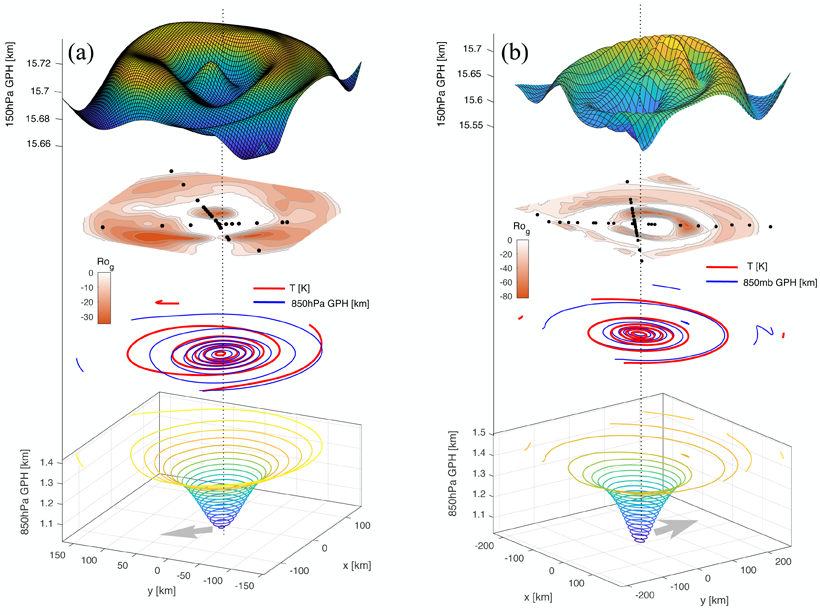Source: Geophysical Research Letters
In most hurricane idealized models there is an assumption of a simple force balance (gradient wind balance), which makes the winds at the surface decoupled from the upper levels. However, previous model simulations showed that a region of high pressure develops at upper levels in hurricanes and that the gradient wind balance is violated in these regions [Cohen et al. 2017].
In a follow up paper, Cohen et al. [2019] examine the structure of hurricanes at upper levels using new field campaign observations. The observations provide data for the structure of the hurricane upper levels and confirm those models. These new observational results illustrate a very important aspect of the upper level dynamics of tropical cyclones that is often overlooked in the characterization of dynamic balance at the top of the storm and may play a role in changes in storm structure and intensity.
This is one of the first papers to examine the structure and mass balance of hurricane upper levels and points to the need of new idealized theories for hurricanes. Furthermore, the impacts of this non-balance in hurricane intensity could potentially lead to improvements of hurricane intensity forecasts.
Citation: Cohen, Y., Durden, S. L., Harnik, N., & Heifetz, E. [2019]. Relating Observations of Gradient Nonbalance at the Top of Hurricanes With Their Warm Core Structures. Geophysical Research Letters, 46. https://doi.org/10.1029/2019GL084248
—Suzana Camargo, Editor, Geophysical Research Letters
Text © 2019. The authors. CC BY-NC-ND 3.0
Except where otherwise noted, images are subject to copyright. Any reuse without express permission from the copyright owner is prohibited.

